Abstract
OBJECTIVES--Comparison of the suitability of two minor urinary metabolites of benzene, trans,trans-muconic acid (tt-MA) and S-phenylmercapturic acid (S-PMA), as biomarkers for low levels of benzene exposure. METHODS--The sensitivity of analytical methods of measuring tt-MA and S-PMA were improved and applied to 434 urine samples collected from 188 workers in 12 studies in different petrochemical industries and from 52 control workers with no occupational exposure to benzene. In nine studies airborne benzene concentrations were assessed by personal air monitoring. RESULTS--Strong correlations were found between tt-MA and S-PMA concentrations in samples from the end of the shift and between either of these variables and airborne benzene concentrations. It was calculated that exposure to 1 ppm (8 hour time weighted average (TWA)) benzene leads to an average concentration of 1.7 mg tt-MA and 47 micrograms S-PMA/g creatinine in samples from the end of the shift. It was estimated that, on average, 3.9% (range 1.9%-7.3%) of an inhaled dose of benzene was excreted as tt-MA with an apparent elimination half life of 5.0 (SD 2.3) hours and 0.11% (range 0.05%-0.26%) as S-PMA with a half life of 9.1 (SD 3.7) hours. The mean urinary S-PMA in 14 moderate smokers and 38 non-smokers was 3.61 and 1.99 micrograms/g creatinine, respectively and the mean urinary tt-MA was 0.058 and 0.037 mg/g creatinine, respectively. S-PMA proved to be more specific and more sensitive (P = 0.030, Fisher's exact test) than tt-MA. S-PMA, but not tt-MA, was always detectable in the urine of smokers who were not occupationally exposed. S-PMA was also detectable in 20 of the 38 non-smokers from the control group whereas tt-MA was detectable in only nine of these samples. The inferior specificity of tt-MA is due to relatively high background values (up to 0.71 mg/g creatinine in this study) that may be found in non-occupationally exposed people. CONCLUSIONS--Although both tt-MA and S-PMA are sensitive biomarkers, only S-PMA allows reliable determination of benzene exposures down to 0.3 ppm (8 h TWA) due to its superior specificity. Because it has a longer elimination half life S-PMA is also a more reliable biomarker than tt-MA for benzene exposures during 12 hour shifts. For biological monitoring of exposure to benzene concentrations higher than 1 ppm (8 h TWA) tt-MA is also suitable and may even be preferred due to its greater ease of measurement.
Full text
PDF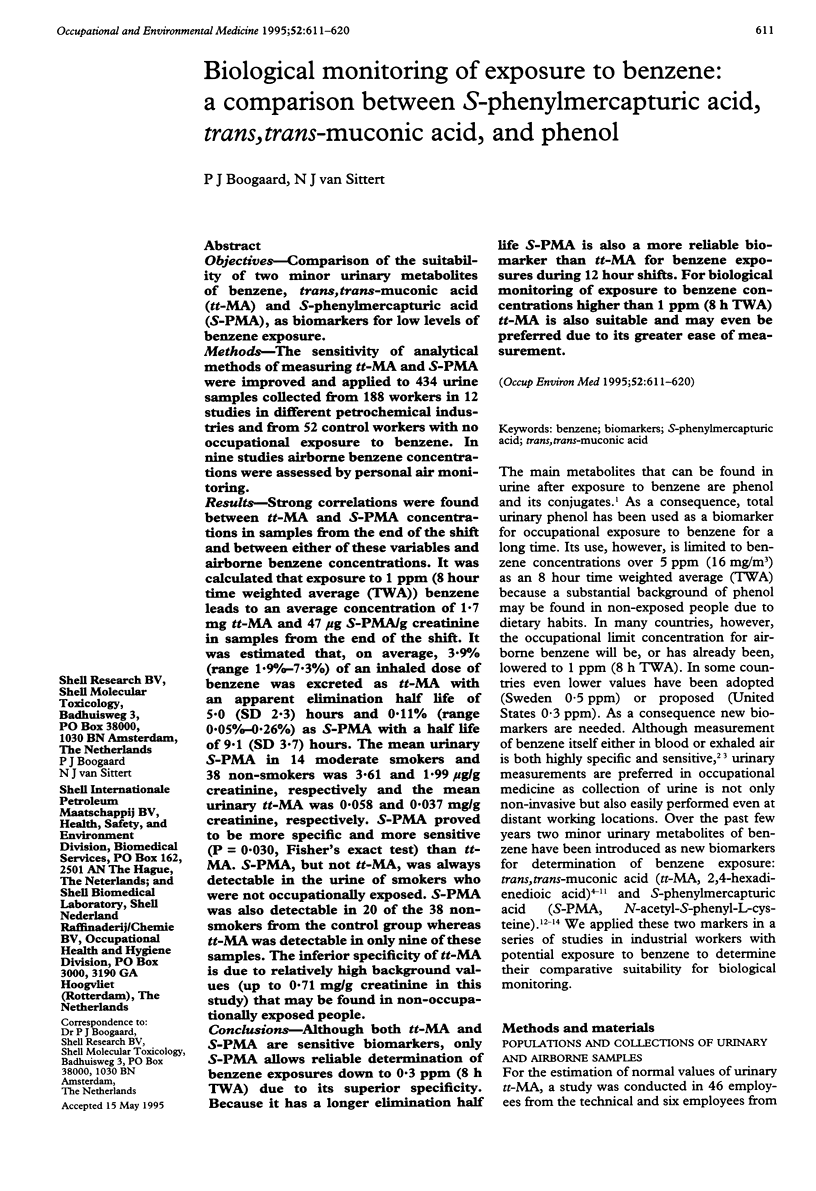
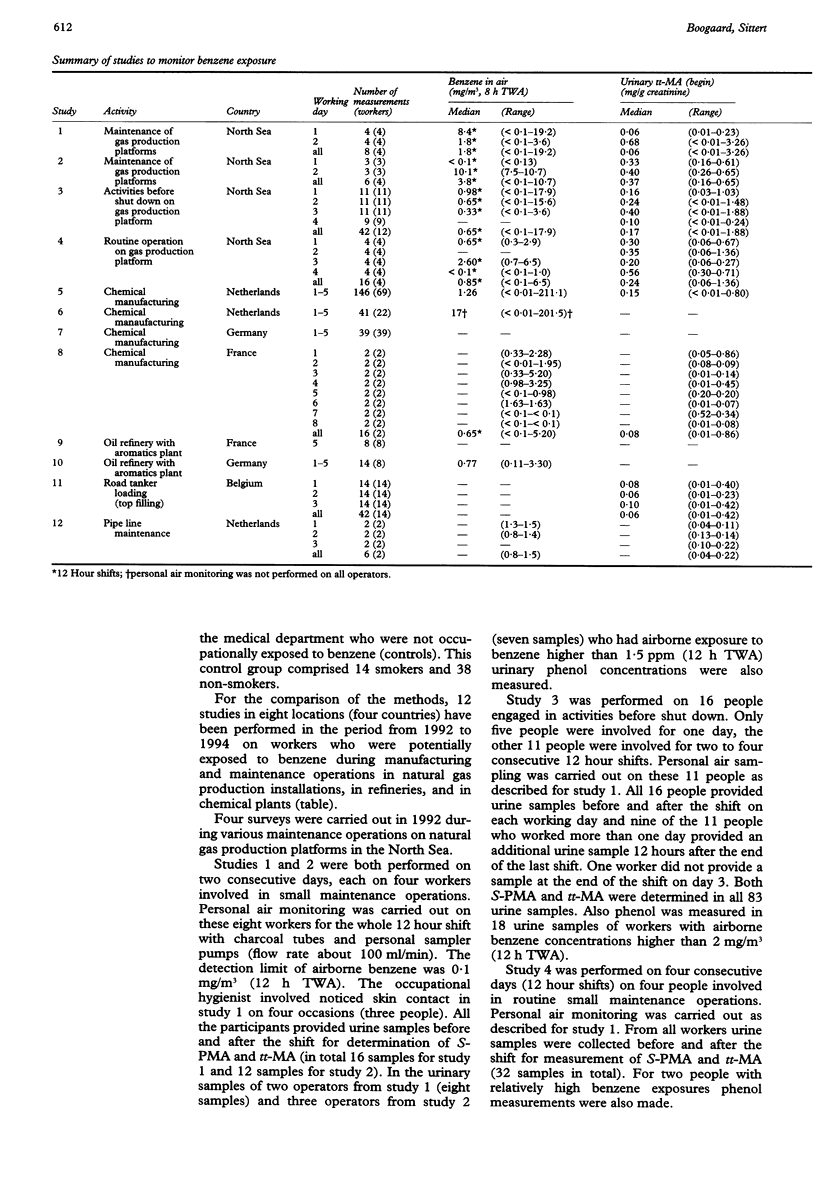
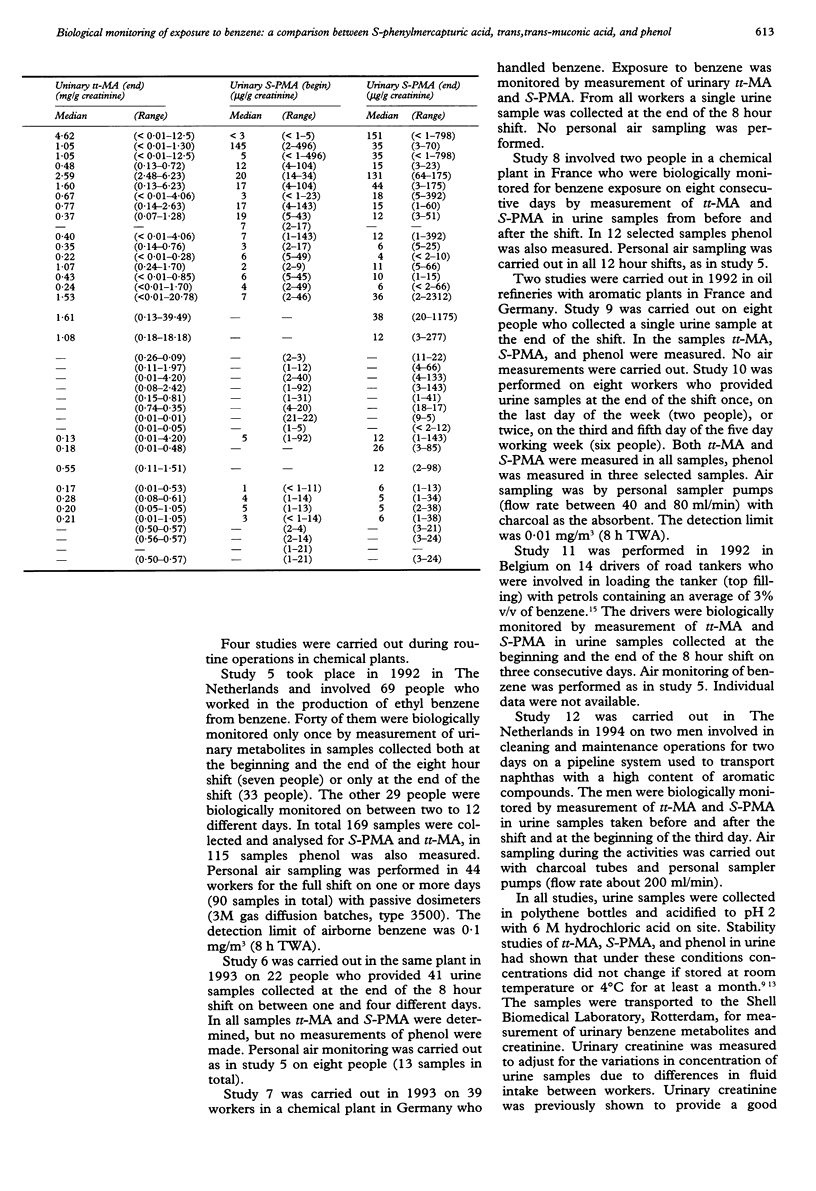
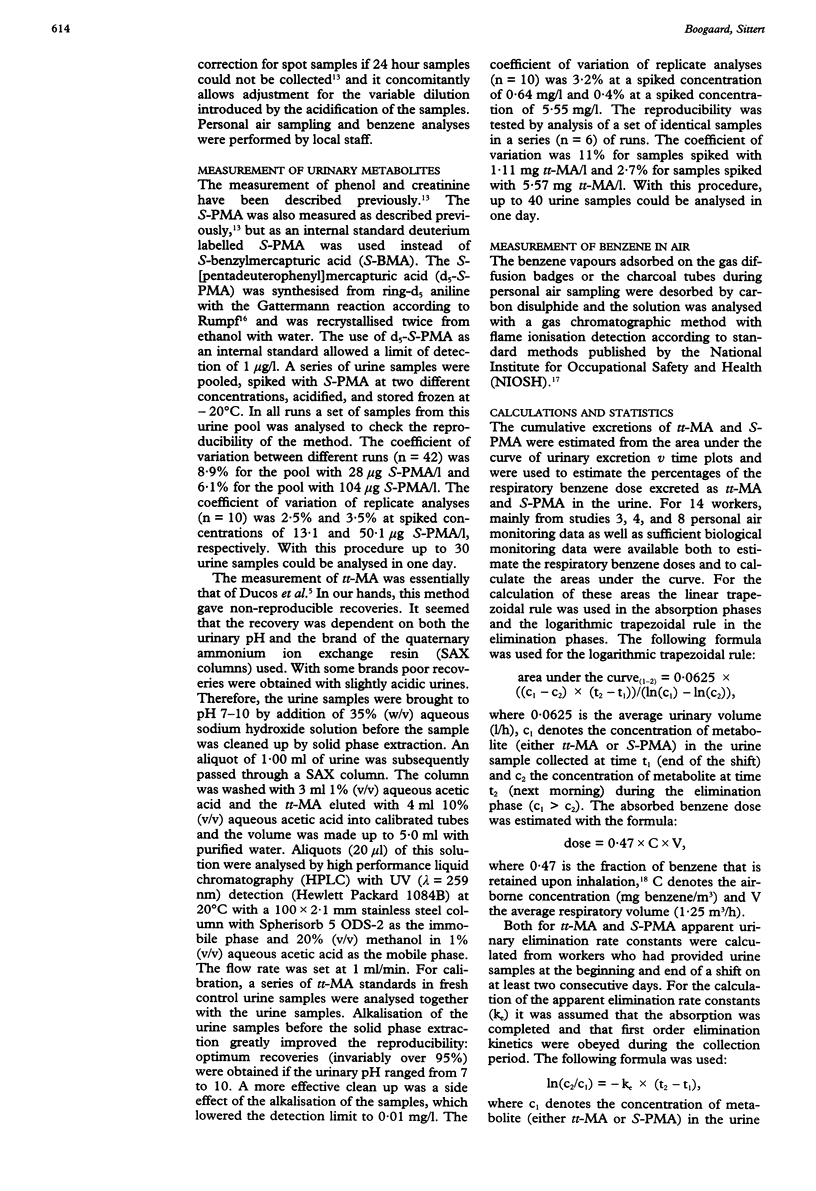
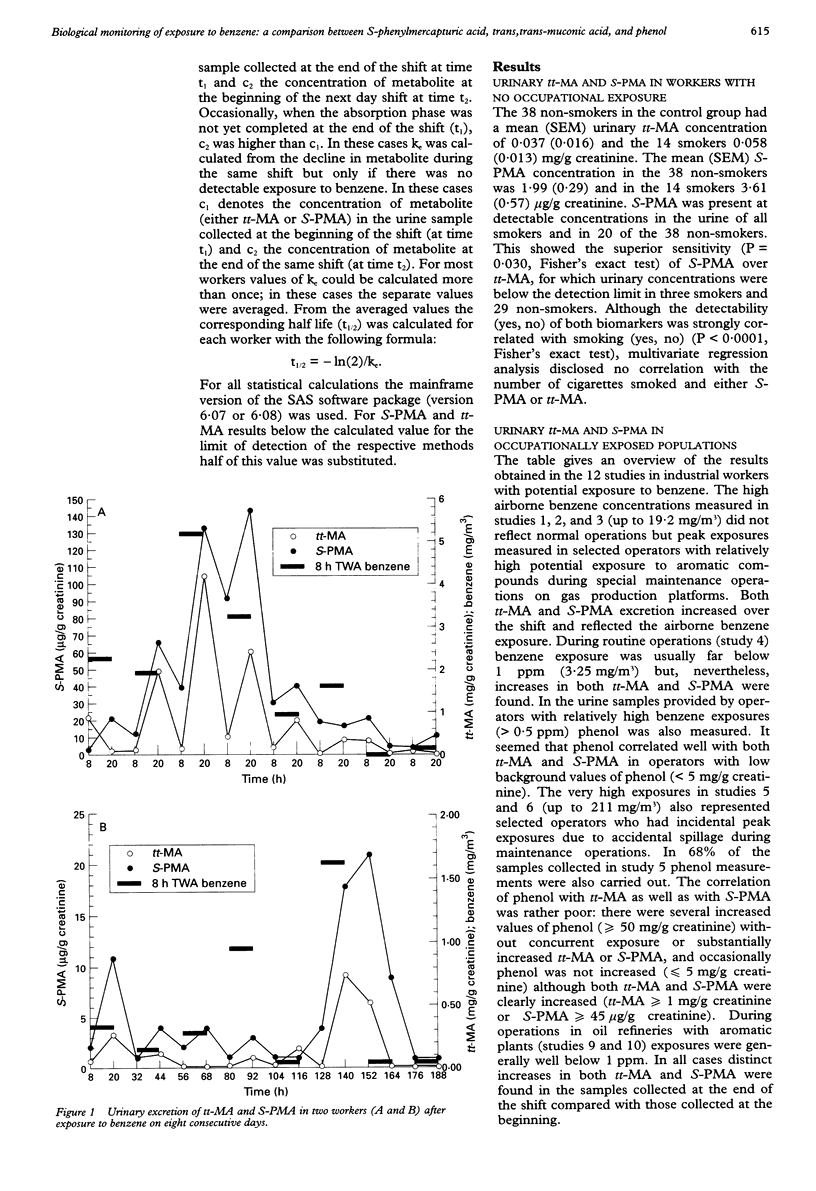
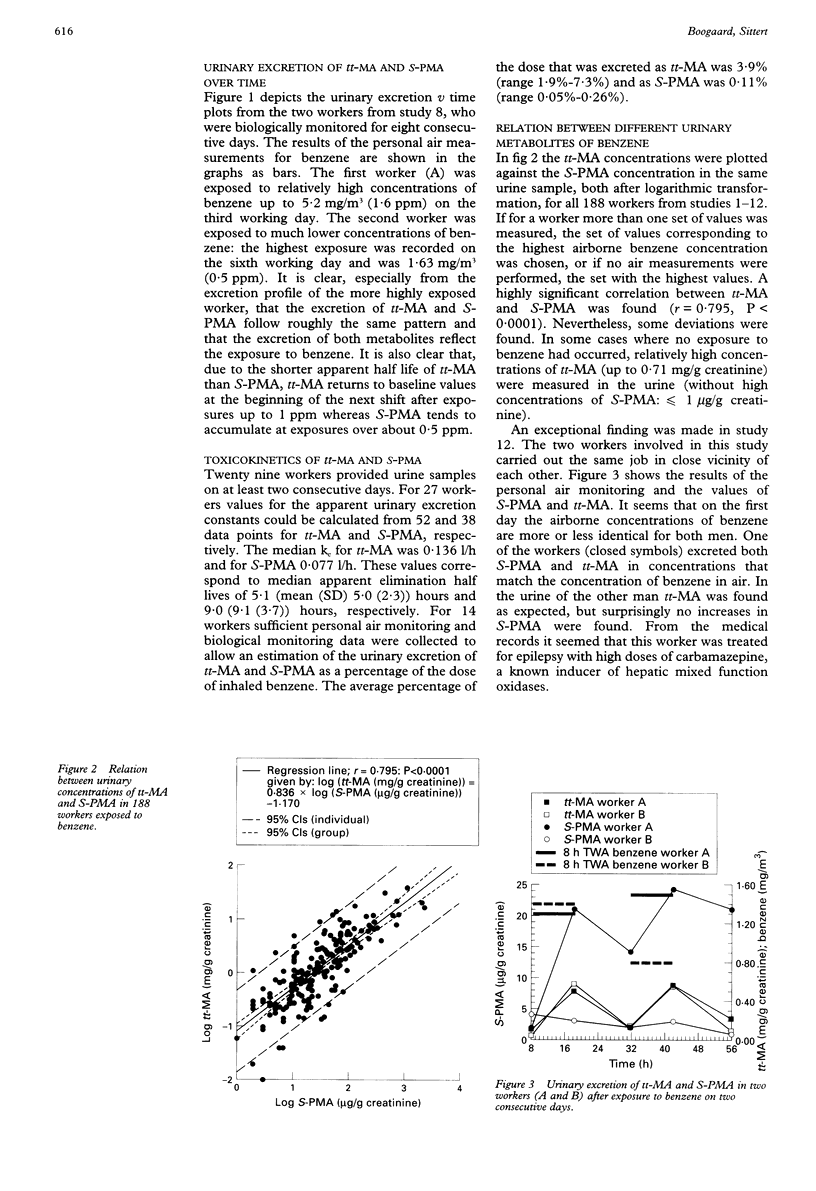
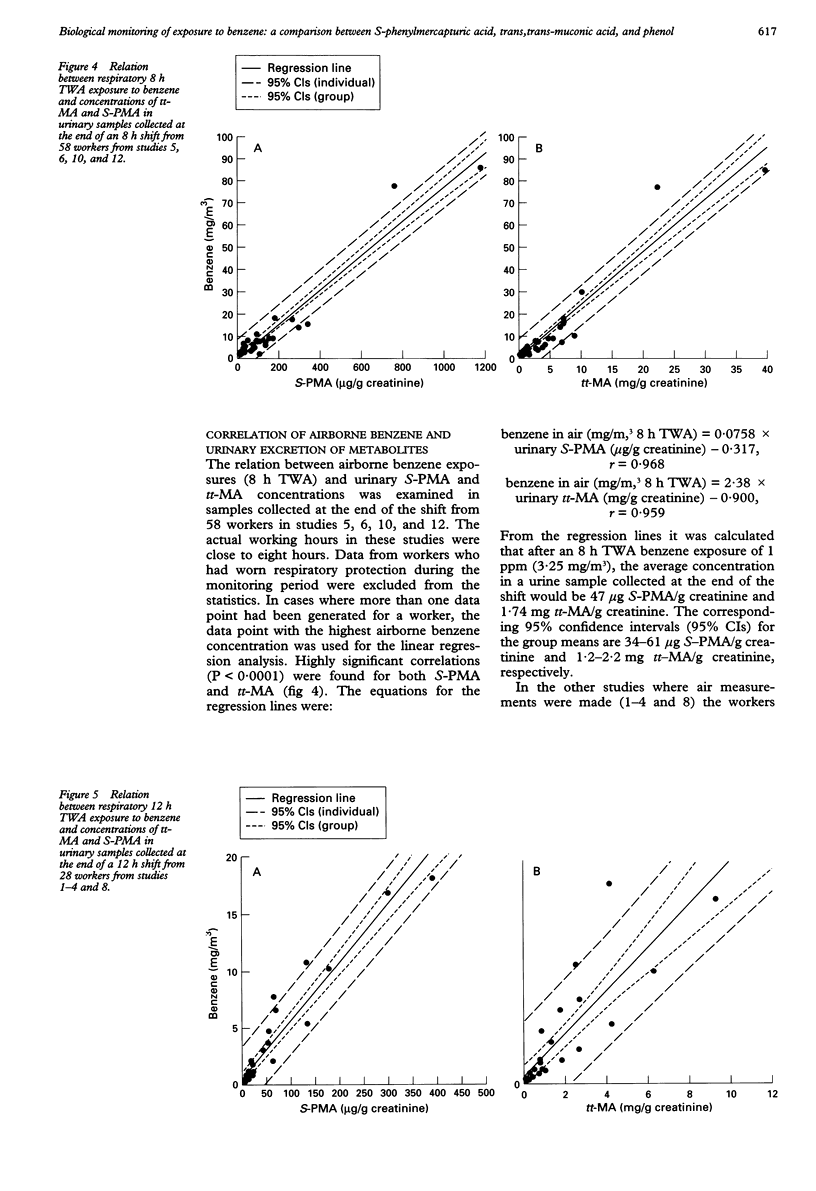
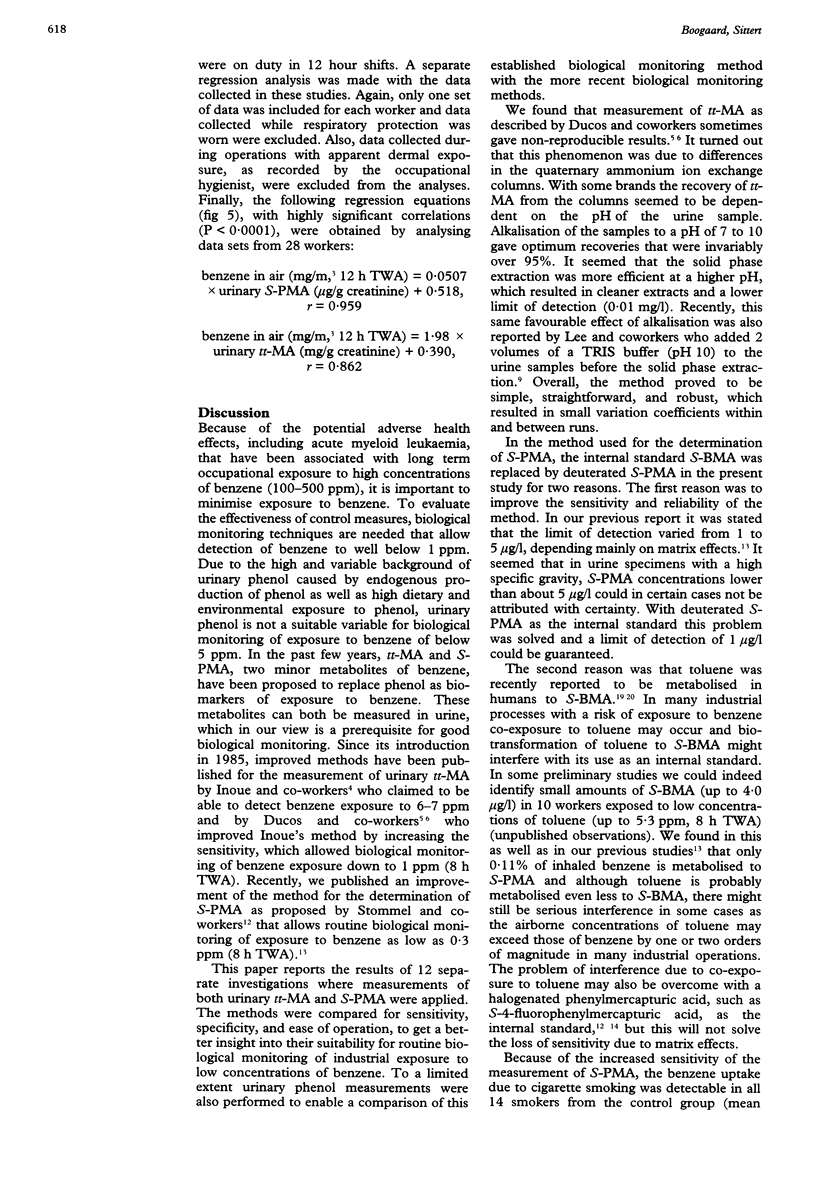
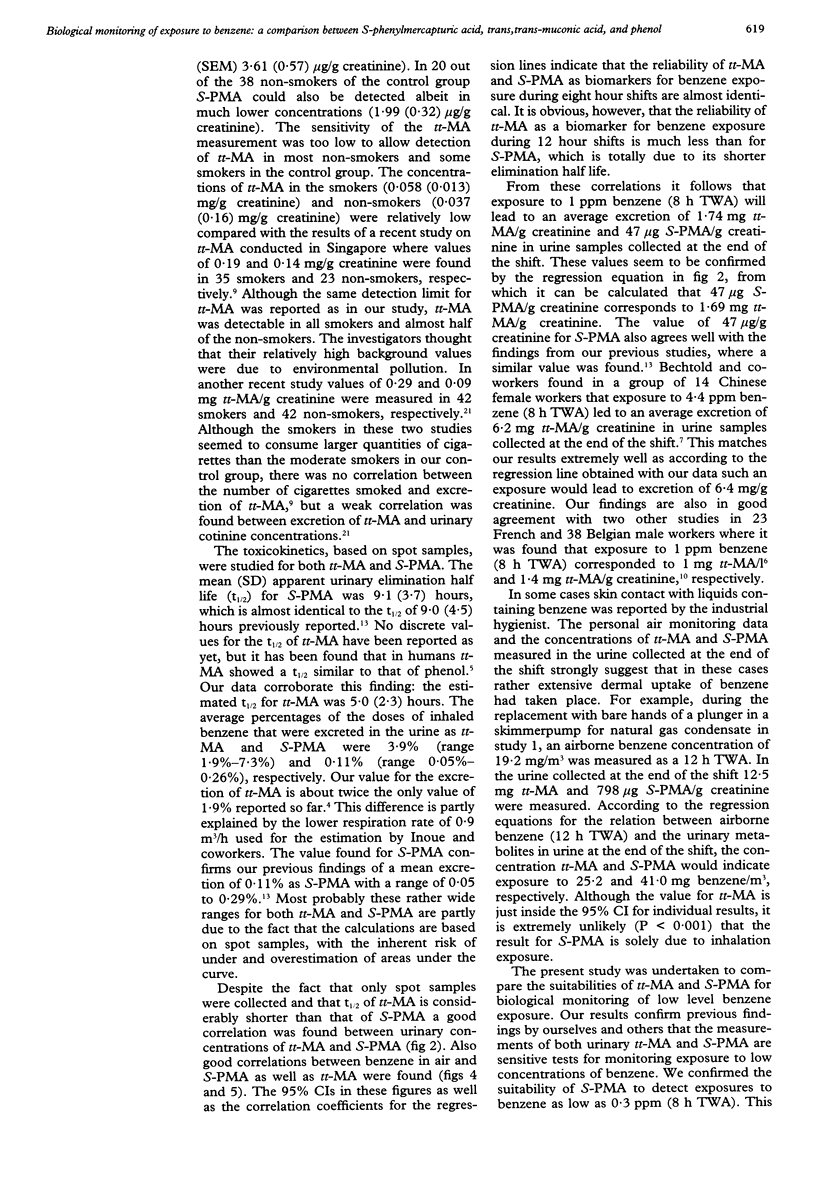
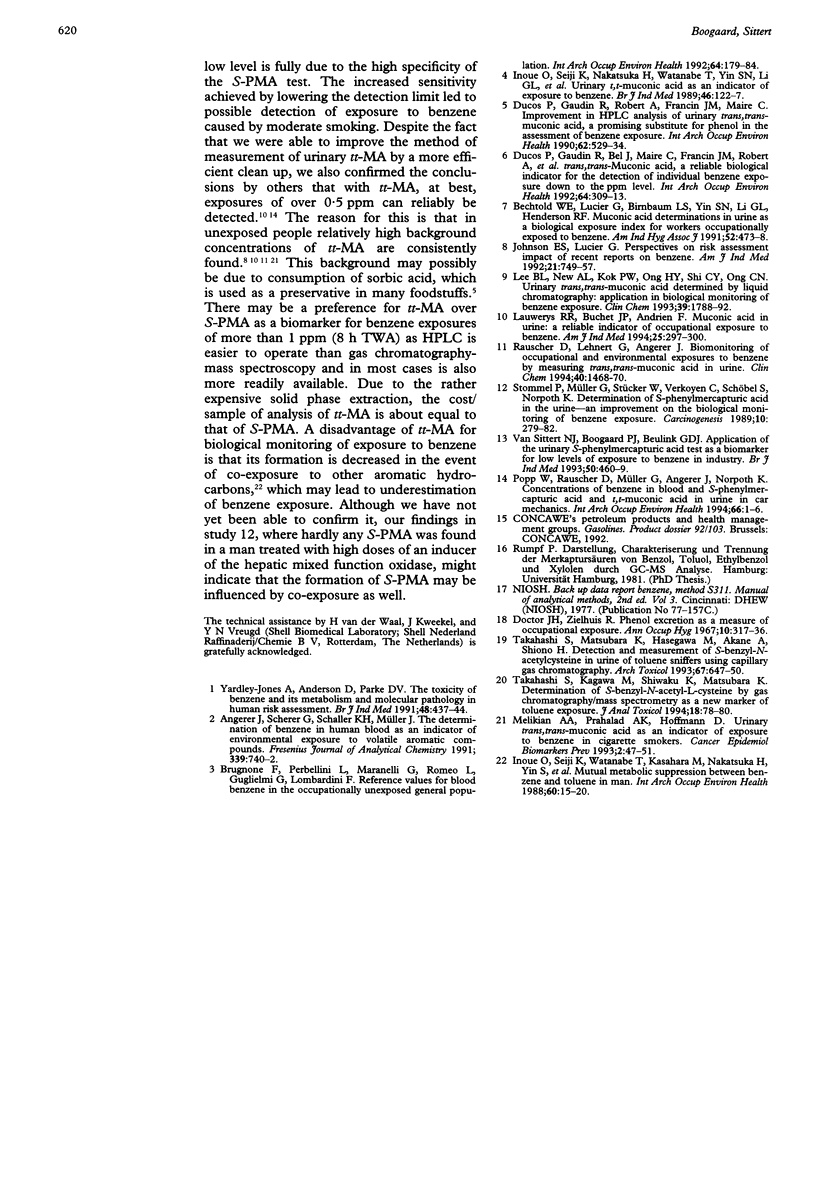
Selected References
These references are in PubMed. This may not be the complete list of references from this article.
- Bechtold W. E., Lucier G., Birnbaum L. S., Yin S. N., Li G. L., Henderson R. F. Muconic acid determinations in urine as a biological exposure index for workers occupationally exposed to benzene. Am Ind Hyg Assoc J. 1991 Nov;52(11):473–478. doi: 10.1080/15298669191365072. [DOI] [PubMed] [Google Scholar]
- Brugnone F., Perbellini L., Maranelli G., Romeo L., Guglielmi G., Lombardini F. Reference values for blood benzene in the occupationally unexposed general population. Int Arch Occup Environ Health. 1992;64(3):179–184. doi: 10.1007/BF00380906. [DOI] [PubMed] [Google Scholar]
- Docter H. J., Zielhuis R. L. Phenol excretion as a measure of benzene exposure. Ann Occup Hyg. 1967 Oct;10(4):317–326. doi: 10.1093/annhyg/10.4.317. [DOI] [PubMed] [Google Scholar]
- Ducos P., Gaudin R., Bel J., Maire C., Francin J. M., Robert A., Wild P. trans,trans-Muconic acid, a reliable biological indicator for the detection of individual benzene exposure down to the ppm level. Int Arch Occup Environ Health. 1992;64(5):309–313. doi: 10.1007/BF00379538. [DOI] [PubMed] [Google Scholar]
- Ducos P., Gaudin R., Robert A., Francin J. M., Maire C. Improvement in HPLC analysis of urinary trans,trans-muconic acid, a promising substitute for phenol in the assessment of benzene exposure. Int Arch Occup Environ Health. 1990;62(7):529–534. doi: 10.1007/BF00381185. [DOI] [PubMed] [Google Scholar]
- Inoue O., Seiji K., Nakatsuka H., Watanabe T., Yin S. N., Li G. L., Cai S. X., Jin C., Ikeda M. Urinary t,t-muconic acid as an indicator of exposure to benzene. Br J Ind Med. 1989 Feb;46(2):122–127. doi: 10.1136/oem.46.2.122. [DOI] [PMC free article] [PubMed] [Google Scholar]
- Inoue O., Seiji K., Watanabe T., Kasahara M., Nakatsuka H., Yin S. N., Li G. L., Cai S. X., Jin C., Ikeda M. Mutual metabolic suppression between benzene and toluene in man. Int Arch Occup Environ Health. 1988;60(1):15–20. doi: 10.1007/BF00409373. [DOI] [PubMed] [Google Scholar]
- Johnson E. S., Lucier G. Perspectives on risk assessment impact of recent reports on benzene. Am J Ind Med. 1992;21(5):749–757. doi: 10.1002/ajim.4700210513. [DOI] [PubMed] [Google Scholar]
- Lauwerys R. R., Buchet J. P., Andrien F. Muconic acid in urine: a reliable indicator of occupational exposure to benzene. Am J Ind Med. 1994 Feb;25(2):297–300. doi: 10.1002/ajim.4700250216. [DOI] [PubMed] [Google Scholar]
- Lee B. L., New A. L., Kok P. W., Ong H. Y., Shi C. Y., Ong C. N. Urinary trans,trans-muconic acid determined by liquid chromatography: application in biological monitoring of benzene exposure. Clin Chem. 1993 Sep;39(9):1788–1792. [PubMed] [Google Scholar]
- Melikian A. A., Prahalad A. K., Hoffmann D. Urinary trans,trans-muconic acid as an indicator of exposure to benzene in cigarette smokers. Cancer Epidemiol Biomarkers Prev. 1993 Jan-Feb;2(1):47–51. [PubMed] [Google Scholar]
- Popp W., Rauscher D., Müller G., Angerer J., Norpoth K. Concentrations of benzene in blood and S-phenylmercapturic and t,t-muconic acid in urine in car mechanics. Int Arch Occup Environ Health. 1994;66(1):1–6. doi: 10.1007/BF00386572. [DOI] [PubMed] [Google Scholar]
- Stommel P., Müller G., Stücker W., Verkoyen C., Schöbel S., Norpoth K. Determination of S-phenylmercapturic acid in the urine--an improvement in the biological monitoring of benzene exposure. Carcinogenesis. 1989 Feb;10(2):279–282. doi: 10.1093/carcin/10.2.279. [DOI] [PubMed] [Google Scholar]
- Takahashi S., Kagawa M., Shiwaku K., Matsubara K. Determination of S-benzyl-N-acetyl-L-cysteine by gas chromatography/mass spectrometry as a new marker of toluene exposure. J Anal Toxicol. 1994 Mar-Apr;18(2):78–80. doi: 10.1093/jat/18.2.78. [DOI] [PubMed] [Google Scholar]
- Takahashi S., Matsubara K., Hasegawa M., Akane A., Shiono H. Detection and measurement of S-benzyl-N-acetylcysteine in urine of toluene sniffers using capillary gas chromatography. Arch Toxicol. 1993;67(9):647–650. doi: 10.1007/BF01974072. [DOI] [PubMed] [Google Scholar]
- Yardley-Jones A., Anderson D., Parke D. V. The toxicity of benzene and its metabolism and molecular pathology in human risk assessment. Br J Ind Med. 1991 Jul;48(7):437–444. doi: 10.1136/oem.48.7.437. [DOI] [PMC free article] [PubMed] [Google Scholar]
- van Sittert N. J., Boogaard P. J., Beulink G. D. Application of the urinary S-phenylmercapturic acid test as a biomarker for low levels of exposure to benzene in industry. Br J Ind Med. 1993 May;50(5):460–469. doi: 10.1136/oem.50.5.460. [DOI] [PMC free article] [PubMed] [Google Scholar]


